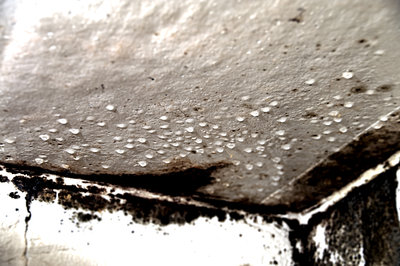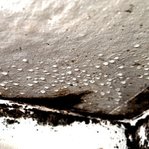Has your home been damaged from Hurricane Sandy? Many homes on Long Island have been flooded, damaged by water, wind and falling trees during this storm. If you were flooded, you’ve probably already invested in a dumpster and started cleaning out damaged furniture, waterlogged clothing and belongings.
 Water and sheetrock do not mix. Once water has touched it, the wallboard acts like a sponge and soaks up the water, which then finds it’s way into the insulation and wood inside the walls. Within 48 hours toxic molds will start to grow, which is the cause of many severe health problems. Any areas of sheetrock and insulation that got wet must be removed as soon as possible to prevent further water damage and mold growth. The wood studs must be washed down in a solution that will kill the mold spores and then they must be cleaned off of the surface of the wood. The wood must then be allowed to fully dry out.
Water and sheetrock do not mix. Once water has touched it, the wallboard acts like a sponge and soaks up the water, which then finds it’s way into the insulation and wood inside the walls. Within 48 hours toxic molds will start to grow, which is the cause of many severe health problems. Any areas of sheetrock and insulation that got wet must be removed as soon as possible to prevent further water damage and mold growth. The wood studs must be washed down in a solution that will kill the mold spores and then they must be cleaned off of the surface of the wood. The wood must then be allowed to fully dry out.
There are quite a few ways to kill the mold. You should always protect yourself by wearing an N95 respirator face mask when removing damaged wallboard, insulation and mold. This mask will prevent the mold spores from entering your lungs. There are pre-mixed solutions that will kill mold available at your local hardware stores that will do the trick, but regular old chlorine or oxygen bleach will also work. Typically you should use a mixture of 1-2 cups of chlorine bleach per gallon of water. When using chlorine bleach, be careful about splashing onto your clothing or skin as it is caustic and will “eat” through and damage your clothing. So always use disposable clothing when working with bleach. You should use heavy duty long rubber gloves, long sleeves and pants to protect your skin from contact. The mixture should be applied liberally; thoroughly saturate and scrub onto every surface that was in contact with the flood waters, insulation or sheetrock. Wait at least 20 minutes for the mold to die and then thoroughly rinse with clean water to remove the residue. Allow the wood to dry fully before replacing the insulation and putting in new sheetrock.
Once you have completed the demolition and removed all the mildew, you will need to inspect and repair any damaged electrical wiring, plumbing and ductwork before re-installing the walls. Make sure that you check out your contractor’s reputation by calling your local consumer affairs office, the better business bureau and get a few client references. If it sounds too good to be true, it probably is. If anyone asks you for payment in full up front, beware! An honest installer will give you an estimated timeline, payment schedule, a detailed written contract and only take a partial deposit upon signing the contract. No legitimate contractor will ever ask for full payment before the work is complete.
If you have been thinking about remodeling or changing the layout in your home, now would be the time to make any revisions you desire. For interior space planning contact an interior designer or a kitchen and bath designer; for revisions that require structural changes, window and door changes or exterior work contact a local architect for budgets, costs and permits.










